Miso Butter Pasta
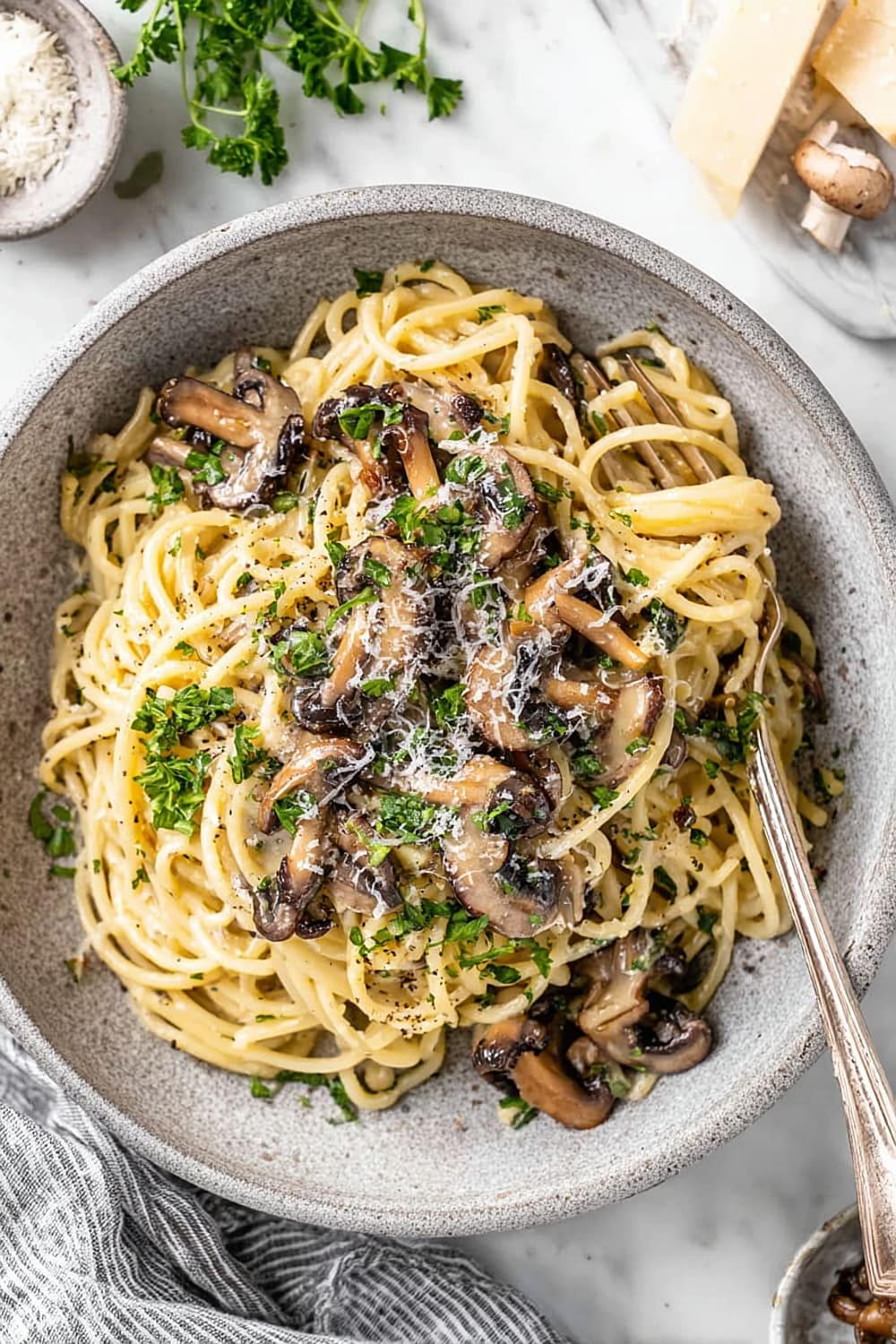
This recipe is about to become your new obsession, and honestly, it should be illegal how good something this simple can taste.
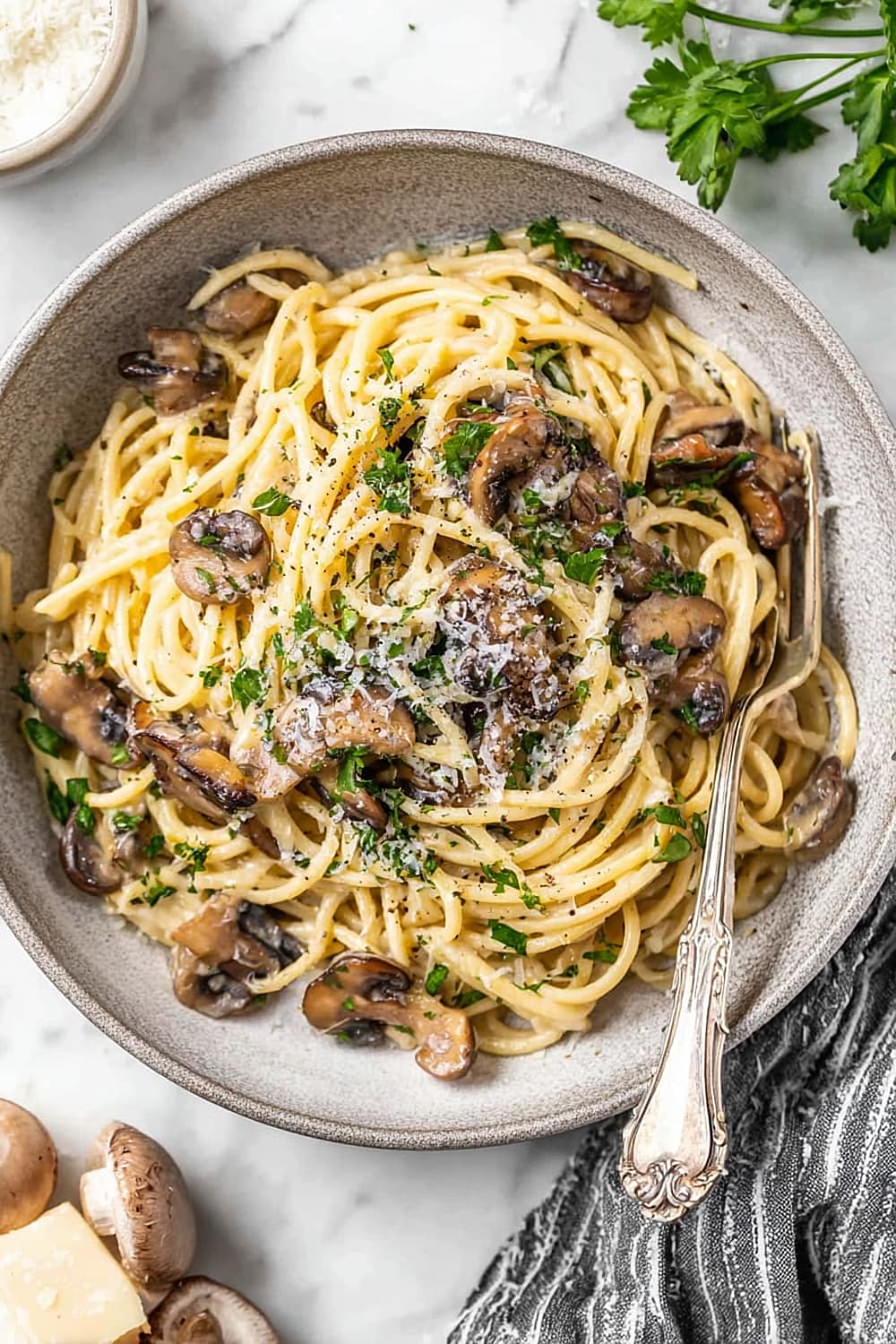
The magic happens when that umami-rich miso meets butter and creates a sauce so silky and complex, you’ll wonder why you ever bothered with anything else.
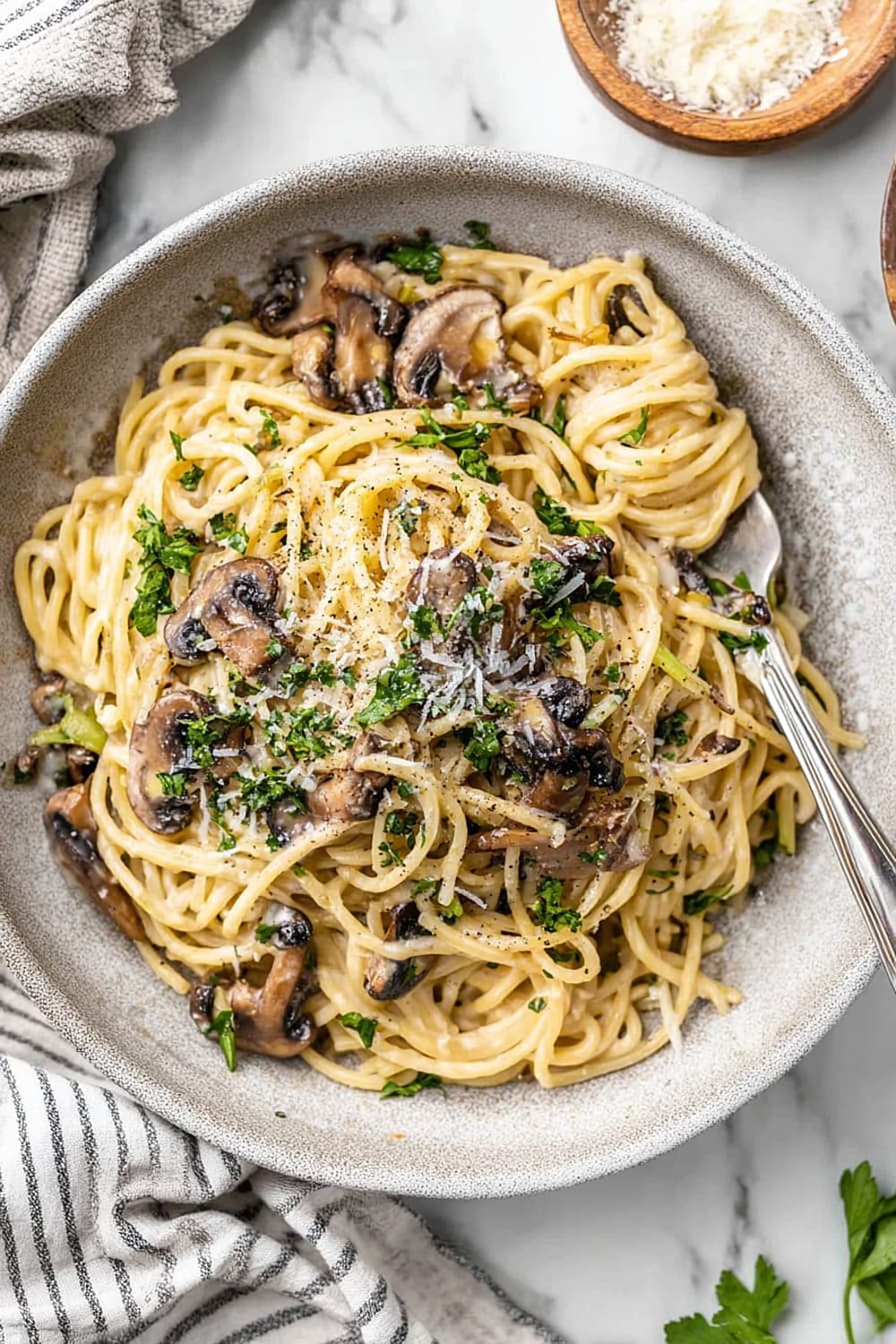
We’re talking about golden shiitake mushrooms that practically melt in your mouth, garlic that perfumes your entire kitchen, and pasta water doing its scientific magic to bind everything into creamy perfection.
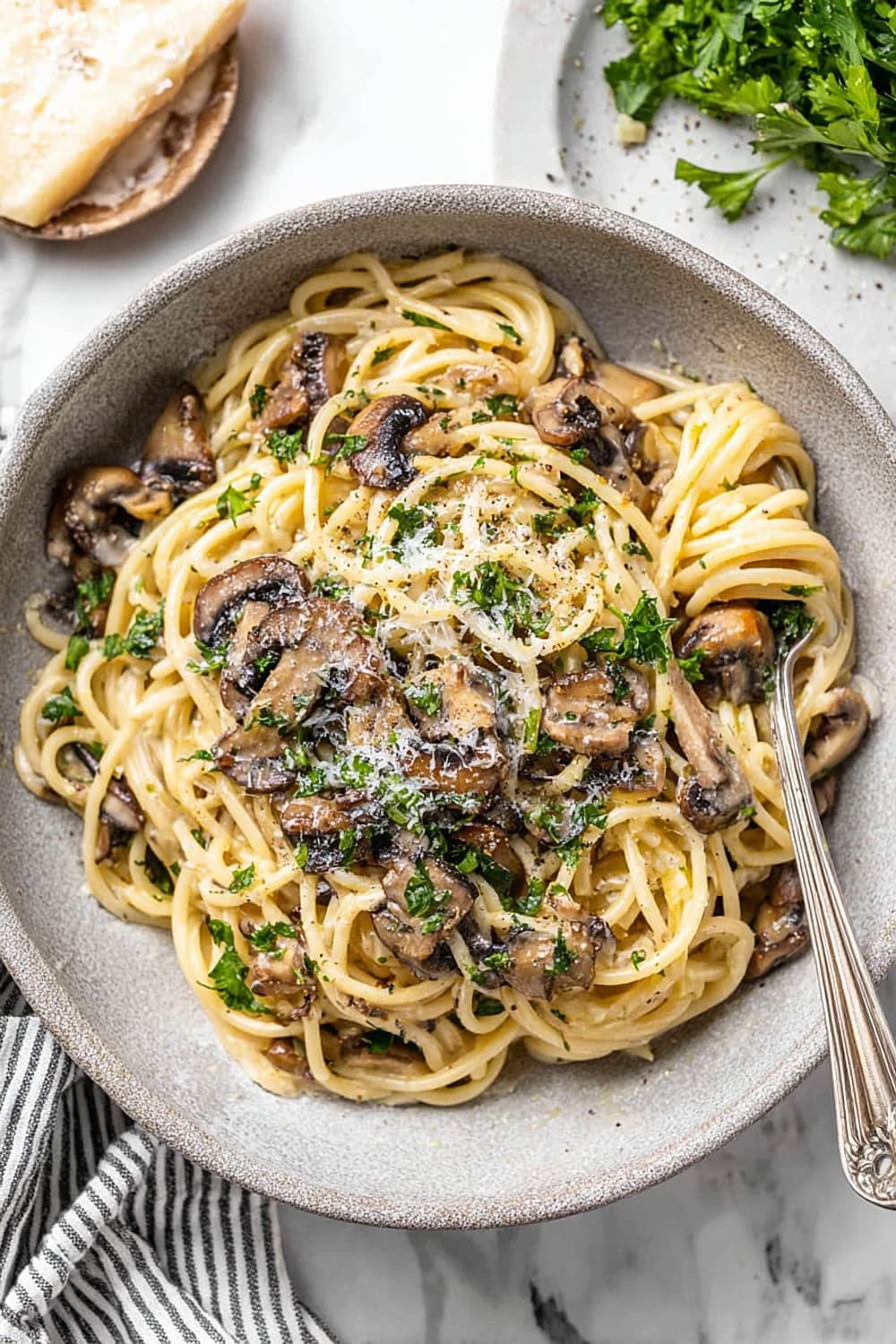
The best part is watching people take their first bite and get that slightly confused look like they can’t figure out why their taste buds are having a party.
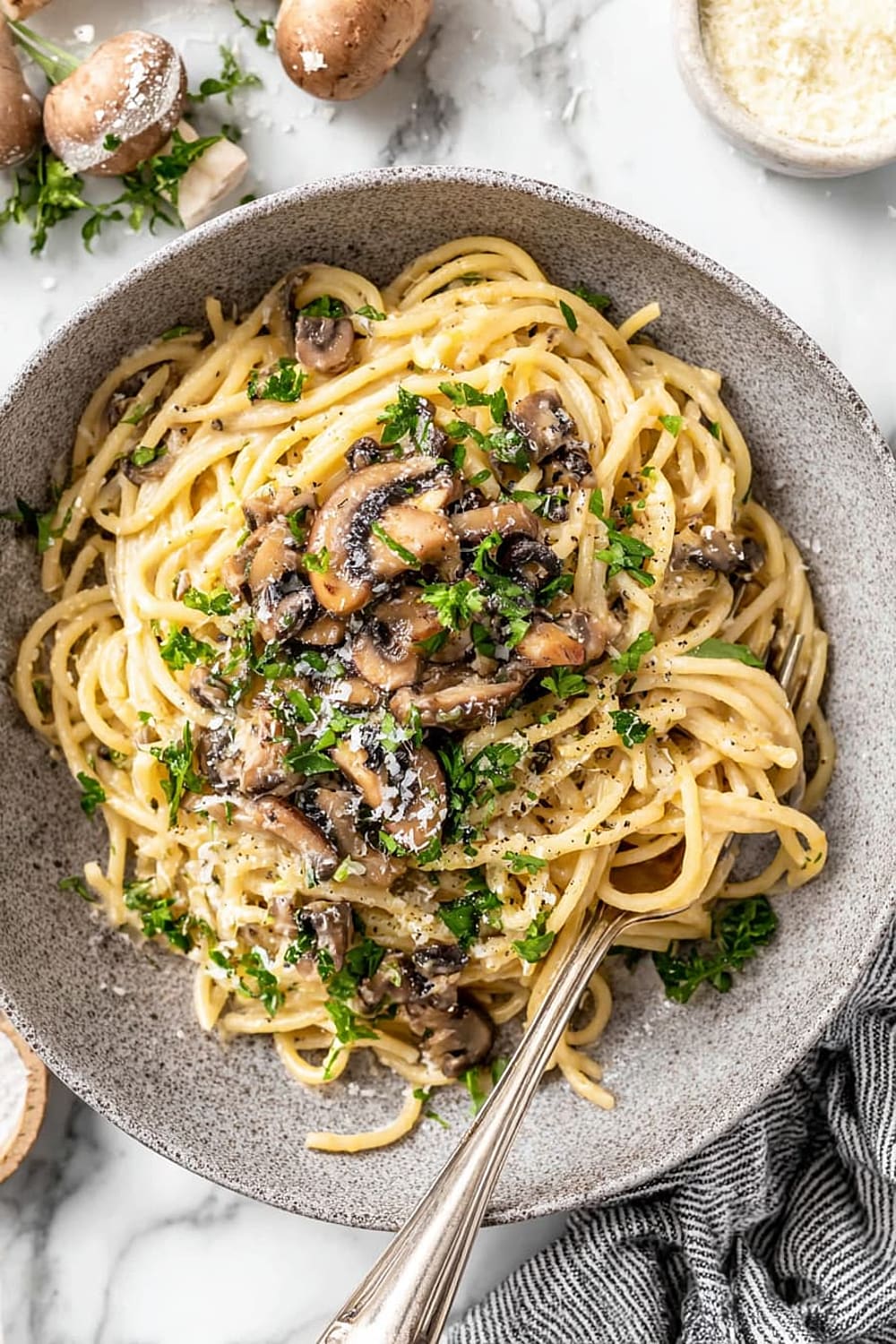
This is the kind of dish that makes you feel like a culinary genius while requiring exactly zero advanced cooking skills or fancy ingredients you can’t pronounce.
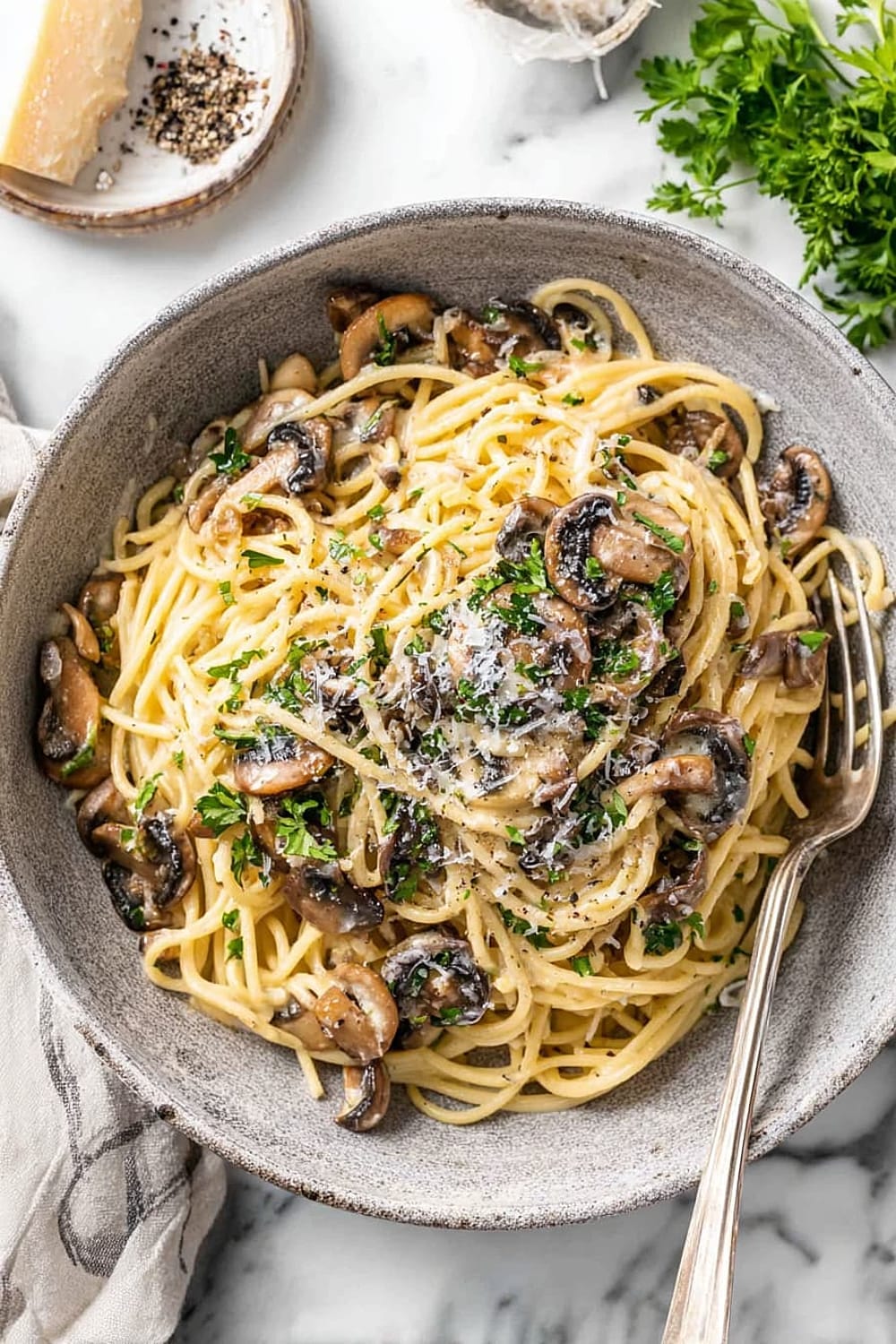
Warning: making this will result in people asking for the recipe, and you’ll have to decide whether you want to share your new secret weapon or keep it all to yourself.
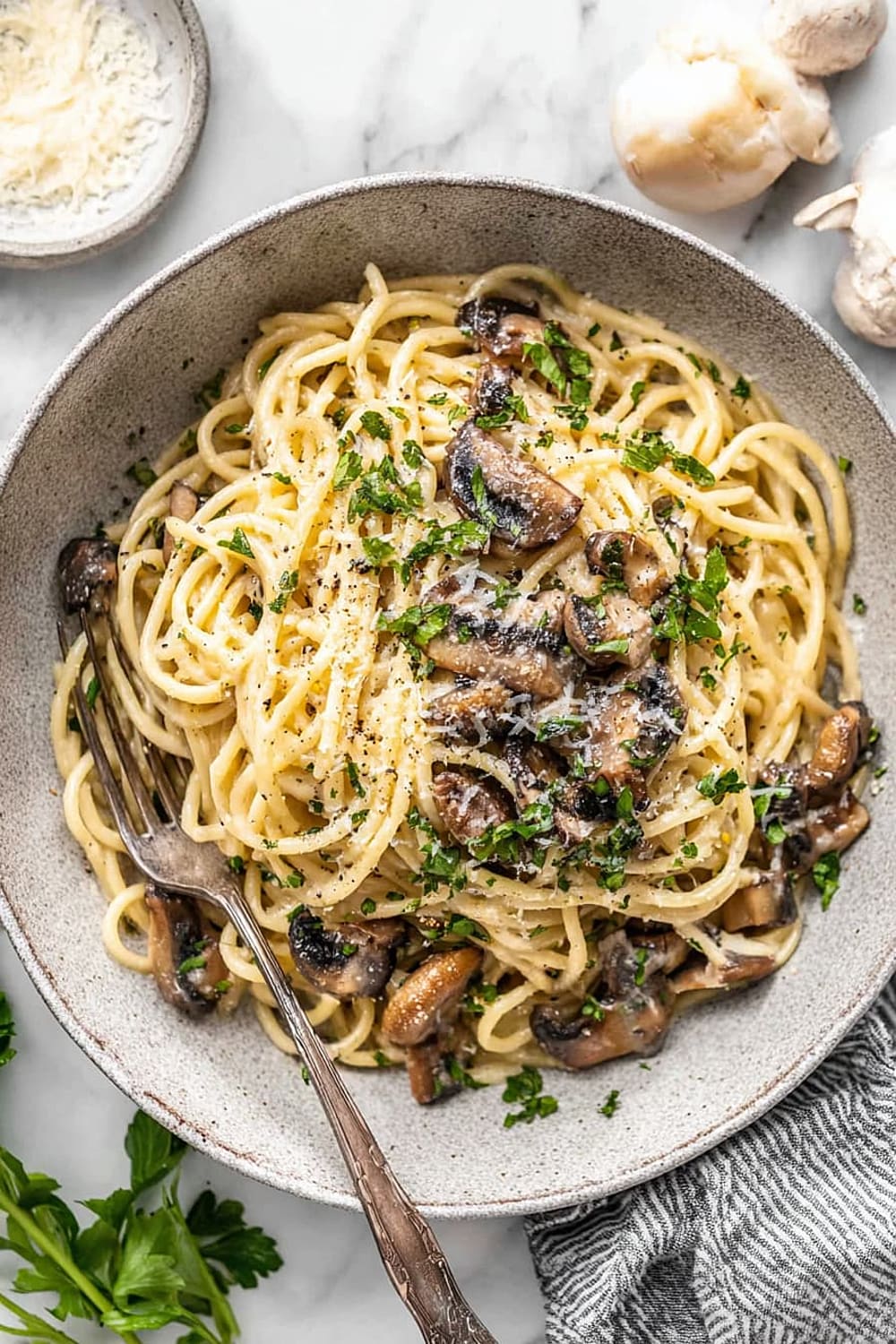
Ingredients
For the pasta
- 8 ounces spaghetti
- 1 to 1½ cups pasta water, reserved from cooking
For the miso butter sauce
- 1 tablespoon avocado oil, or oil of choice
- 1 tablespoon vegan butter
- 3 tablespoons white miso paste
- 4 cloves garlic, minced
- ¼ cup vegan Parmesan cheese
For the mushrooms and garnish
- 5 ounces shiitake mushrooms, sliced
- Sea salt and black pepper to taste
- 2 tablespoons fresh parsley, chopped (or herb of your choice)
Instructions
Prepare the pasta
- 1 Bring a large pot of well-salted water to a rolling boil. The water should taste like the sea – this is your only chance to season the pasta itself. Cook the 8 ounces spaghetti according to package directions until al dente, typically 8-10 minutes. Before draining, reserve 1 to 1½ cups of the starchy pasta water using a liquid measuring cup – this liquid gold will create the silky sauce texture.
Cook the mushrooms
- 2 While the pasta cooks, heat ½ tablespoon avocado oil and the full tablespoon vegan butter in a large skillet or cast iron pan over medium-high heat. The pan should be large enough to eventually hold all the pasta comfortably.
- 3 Add the sliced shiitake mushrooms to the hot pan in a single layer. Resist the urge to move them around – let them develop those beautiful golden-brown edges for 5-8 minutes. Season lightly with sea salt and black pepper. The mushrooms should release their moisture and become caramelized. Remove mushrooms from the pan and set aside on a plate.
Create the miso sauce
- 4 Reduce heat to medium-low and let the pan cool for about 3 minutes. This temperature control is crucial – too hot and the garlic will burn, creating bitter flavors that will ruin your sauce.
- 5 Add the remaining ½ tablespoon oil to the same pan. Add minced garlic and sauté for about 1 minute until fragrant but not browned. The garlic should sizzle gently and fill your kitchen with aroma.
- 6 Add 3 tablespoons white miso and 1 cup pasta water to the pan. Using a whisk, stir vigorously until the miso completely dissolves and the mixture becomes smooth and creamy. The sauce should have no lumps and appear glossy.
Finish and serve
- 7 Stir in the vegan Parmesan cheese until melted and incorporated. The sauce should coat the back of a spoon at this point.
- 8 Add the drained pasta, cooked mushrooms, and fresh parsley to the pan. Using tongs, toss everything together until the pasta is completely coated with sauce. If the mixture seems too thick, add additional pasta water 2 tablespoons at a time until you achieve a creamy consistency that coats each strand perfectly. Remove from heat immediately to prevent the pasta from drying out.
- 9 Taste and adjust seasonings with additional salt, pepper, or miso as desired. Serve immediately while the sauce is still glossy and the pasta is perfectly warm.
Recommended Equipment and Kitchen Tools
Essential Tools (for best results)
- Large pasta pot – A heavy-bottomed pot ensures even heating and prevents pasta from sticking. An 8-quart capacity works perfectly for this recipe and allows pasta to move freely while cooking.
- Large skillet or cast iron pan – At least 12-inch diameter to accommodate all the pasta without overcrowding. Cast iron retains heat beautifully for achieving those golden mushroom edges.
- Whisk – Critical for dissolving miso paste smoothly and preventing lumps in your sauce. A balloon whisk works best for incorporating ingredients completely.
- Tongs – Essential for tossing pasta with sauce without breaking the noodles. Stainless steel tongs with good grip make the process effortless.
Helpful Upgrades
- Digital kitchen scale – For precise pasta portions and consistent results every time. Professional chefs swear by weight measurements over volume.
- Fine-mesh strainer – Perfect for reserving pasta water while keeping pasta separate. Much easier than trying to scoop water with a ladle.
- Microplane grater – If you want to add fresh garlic at the last minute or grate fresh parmesan for garnish.
Nice-to-Have Options
- Pasta serving bowls – Pre-warmed bowls keep your pasta at the perfect temperature longer. Simply rinse with hot water before plating.
Recipe Variations and Dietary Modifications
Protein Additions
- Crispy tofu – Cube extra-firm tofu and pan-fry until golden before adding mushrooms. Adds satisfying texture and makes this a complete meal.
- Tempeh crumbles – Crumble and sauté tempeh for a nutty, substantial protein that complements the umami flavors perfectly.
- White beans – Cannellini or great northern beans add creaminess and fiber while keeping the dish plant-based.
Mushroom Variations
- Mixed wild mushrooms – Combine shiitake with oyster, cremini, or maitake for complex flavors and varied textures.
- King oyster mushrooms – Slice lengthwise and score for a scallop-like texture that elevates this dish to restaurant quality.
- Dried porcini – Rehydrate and add along with the soaking liquid for intense, earthy flavors.
Noodle Alternatives
- Rice noodles – Use wide rice noodles for a gluten-free version that still holds sauce beautifully.
- Zucchini noodles – Spiralized zucchini for a low-carb option, though you’ll need less pasta water for the sauce.
- Udon noodles – Thick wheat noodles create a more substantial, Japanese-inspired dish.
Flavor Enhancements
- Sesame oil – A few drops at the end adds nutty depth without overwhelming the miso.
- Rice wine vinegar – A splash brightens the rich umami flavors and adds complexity.
- Red pepper flakes – For those who like a gentle heat that builds with each bite.
Nutritional Information and Health Benefits
Key Nutritional Highlights
This recipe provides approximately 380 calories per serving, with a balanced macronutrient profile featuring complex carbohydrates from pasta, healthy fats from avocado oil and nuts in vegan butter, and plant-based protein from miso and nutritional yeast. Each serving delivers about 12 grams protein, 8 grams fiber, and 15 grams healthy fats, making it surprisingly satisfying and nutritionally complete.
Health Benefits of Main Ingredients
Miso paste is a fermented powerhouse containing beneficial probiotics that support digestive health and immune function. This traditional Japanese ingredient provides essential amino acids, B vitamins, and minerals like zinc and manganese. Shiitake mushrooms are nutritional superstars, containing beta-glucans that support immune health, plus significant amounts of selenium, copper, and B vitamins. They also provide unique compounds like eritadenine, which may help maintain healthy cholesterol levels. Garlic offers allicin and other sulfur compounds with anti-inflammatory and cardiovascular benefits.
Dietary Considerations
This recipe is naturally vegan and dairy-free, making it suitable for plant-based diets. The fermented miso provides umami depth typically associated with cheese-based pasta dishes. Those with soy allergies should avoid this recipe due to the miso paste. The dish provides sustained energy from complex carbohydrates while the healthy fats help with nutrient absorption and satiety.
Smart Swaps and Ingredient Substitutions
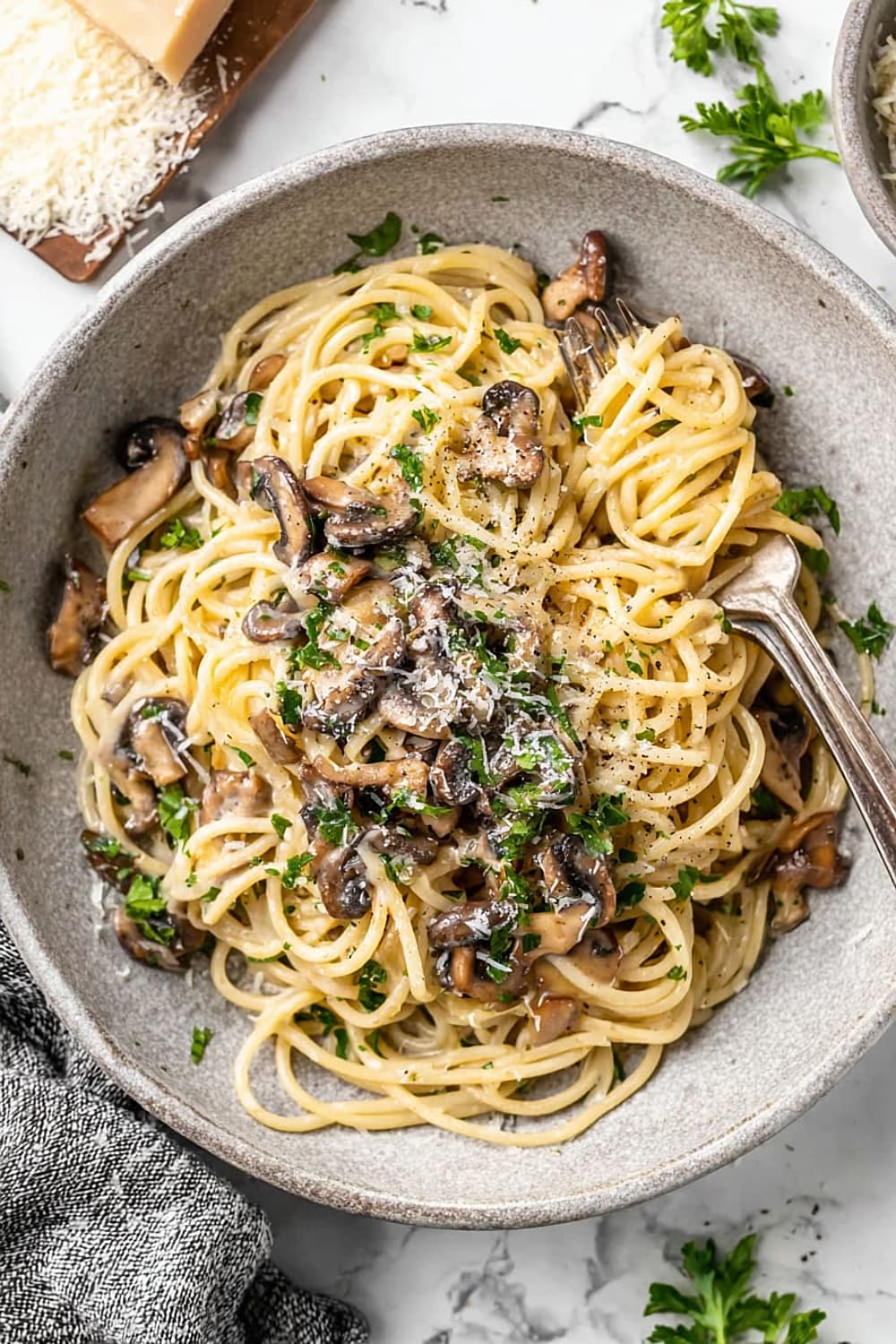
Miso Paste Alternatives:
- White miso → Yellow or red miso (use 2 tablespoons instead of 3, as they’re more intense)
- Miso paste → Tahini + soy sauce (2 tablespoons tahini + 1 tablespoon soy sauce for similar umami depth)
- White miso → Nutritional yeast + soy sauce (3 tablespoons nutritional yeast + 2 tablespoons soy sauce)
Mushroom Substitutions:
- Shiitake mushrooms → Cremini or baby bella mushrooms (similar cooking time, slightly milder flavor)
- Fresh shiitakes → Dried shiitakes, rehydrated (use soaking liquid as part of pasta water for extra flavor)
- Shiitake → Oyster mushrooms (cook for 3-4 minutes less as they’re more delicate)
Oil and Fat Swaps:
- Vegan butter → Regular butter for non-vegan version
- Avocado oil → Olive oil, sesame oil, or grapeseed oil (sesame adds nutty notes)
- Vegan Parmesan → Nutritional yeast (use 3 tablespoons for similar cheesy flavor)
Budget-Friendly Options:
- Fresh shiitakes → Button mushrooms (⅓ the cost, still delicious)
- Fresh parsley → Dried herbs (use 1 tablespoon dried instead of 2 tablespoons fresh)
Make It Diabetes-Friendly
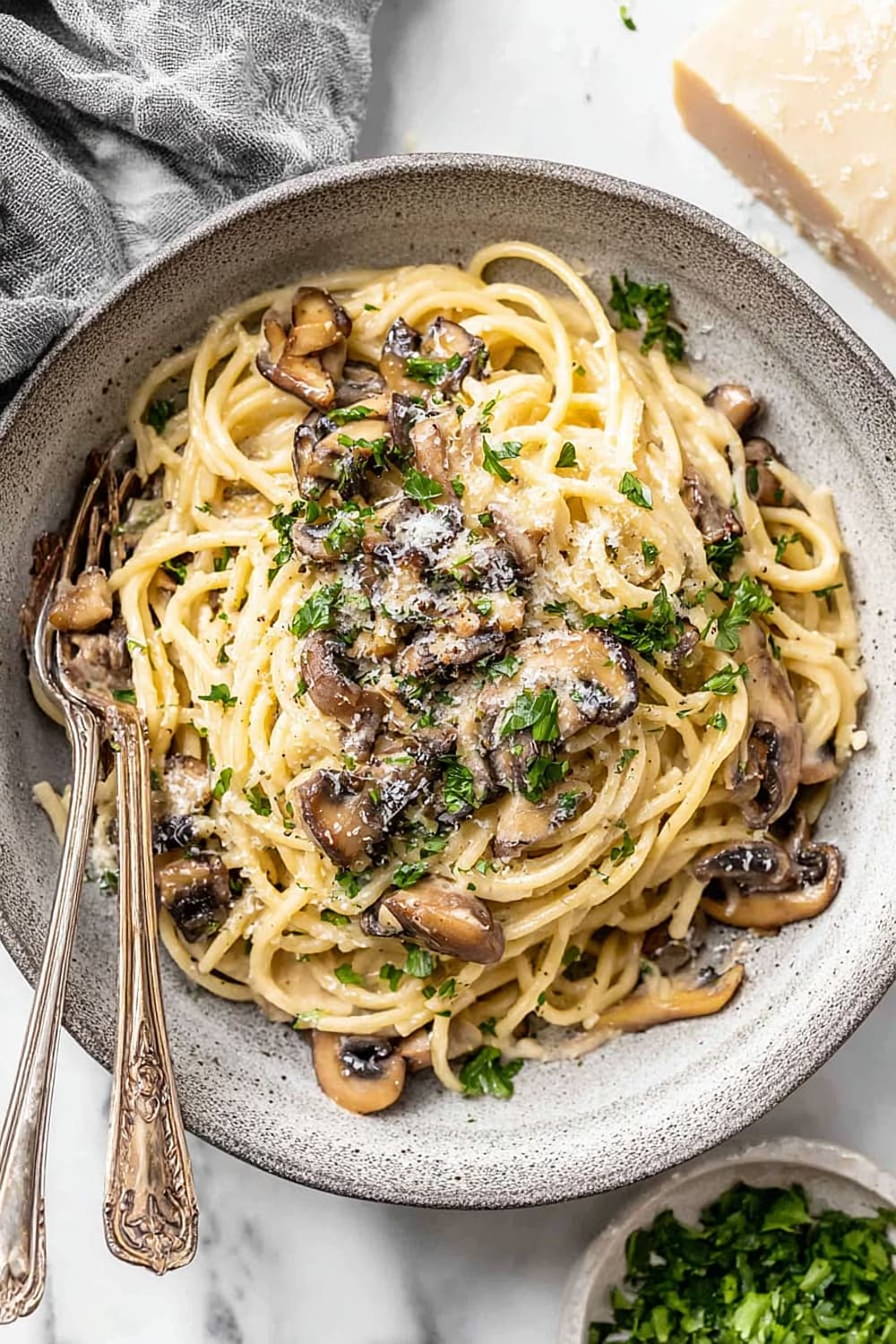
Carb Reduction Strategies:
- Replace regular pasta → Shirataki noodles or zucchini noodles to reduce carbs from 45g to under 10g per serving
- Use half pasta, half vegetables → 4 oz pasta + 2 cups spiralized vegetables cuts carbs by approximately 50%
- Portion control → Serve 6 oz portions instead of 8 oz reduces carbs from 45g to about 30g per serving
Blood Sugar Management:
- Add extra fiber → Include 1 cup steamed broccoli or spinach to slow glucose absorption
- Protein boost → Add ½ cup white beans or cubed tofu to help stabilize blood sugar response
- Healthy fats → Drizzle with 1 teaspoon sesame oil to further slow carbohydrate absorption
Timing and Pairing Tips:
- Serve with a side salad → Mixed greens with vinaigrette eaten first helps moderate blood sugar spikes
- Smaller portions → Serve as a side dish with grilled vegetables and protein rather than as the main course
- Monitor timing → Best consumed earlier in the day when insulin sensitivity is typically higher
Total Carb Reduction: Modified version contains approximately 20-25g carbs per serving compared to 45g in the original recipe.
Perfect Pairing Suggestions
Beverage Pairings
White wines like Pinot Grigio or Sauvignon Blanc complement the umami richness without competing with the delicate miso flavors. For beer lovers, a crisp lager or wheat beer provides a refreshing contrast to the creamy sauce. Non-alcoholic options include sparkling water with lime, green tea, or kombucha, which echoes the fermented elements in miso. Sake creates an elegant Japanese-inspired pairing that enhances the dish’s authentic flavors.
Side Dish Recommendations
A crisp cucumber salad with rice vinegar dressing cuts through the richness while adding refreshing crunch. Steamed edamame with sea salt continues the Japanese theme and provides additional protein. Roasted Brussels sprouts with a touch of sesame oil create a perfect textural contrast. Asian-style slaw with cabbage, carrots, and ginger-lime dressing adds vibrant colors and fresh flavors that complement the earthy mushrooms.
Complete Meal Ideas
Start with miso soup and vegetable gyoza for an authentic Japanese progression. Follow the pasta with matcha ice cream or fresh fruit for a light finish. For casual entertaining, serve alongside teriyaki-glazed vegetables and brown rice for a complete plant-based feast.
Occasion Suggestions
Perfect for weeknight dinners when you want something special but quick, date nights at home, or casual dinner parties where you want to impress without stress. The sophisticated flavors make it ideal for fall and winter entertaining when comfort food cravings peak.
Pro Tips and Troubleshooting
Professional Techniques
Salt your pasta water generously – it should taste like seawater. This is your only opportunity to season the pasta itself, and under-salted pasta will make the entire dish taste flat. Reserve pasta water before draining – the starchy, salty liquid is essential for creating the silky sauce texture. Don’t rinse pasta after draining, as you want that surface starch to help the sauce adhere. Control your heat carefully when making the sauce – too high and the miso can separate or the garlic will burn.
Common Mistakes and Solutions
If your miso sauce looks lumpy, remove from heat and whisk vigorously while adding pasta water gradually. Clumpy sauce usually means the pan was too hot when you added the miso. If the pasta seems dry, add more pasta water one tablespoon at a time – the sauce should coat each strand glossily. Overcooked mushrooms become rubbery, so aim for golden-brown edges while maintaining tender centers.
Storage and Reheating
Refrigerate leftovers for up to 3 days in airtight containers. Reheat gently in a pan with a splash of water or broth rather than microwaving, which can make the pasta gummy. Add fresh herbs after reheating to brighten the flavors. This dish is best enjoyed fresh, as pasta continues to absorb sauce during storage.
Make-Ahead Strategies
Prep ingredients up to 4 hours ahead – slice mushrooms, mince garlic, and measure miso. Cook mushrooms earlier in the day and reheat when assembling. However, cook pasta fresh for best texture, as it only takes 10 minutes and makes a significant difference in the final result.
This miso butter pasta proves that the most memorable meals often come from the simplest techniques executed with care and attention to detail. Every silky, umami-rich bite will remind you that sometimes the best comfort food comes from unexpected flavor combinations that just work perfectly together.